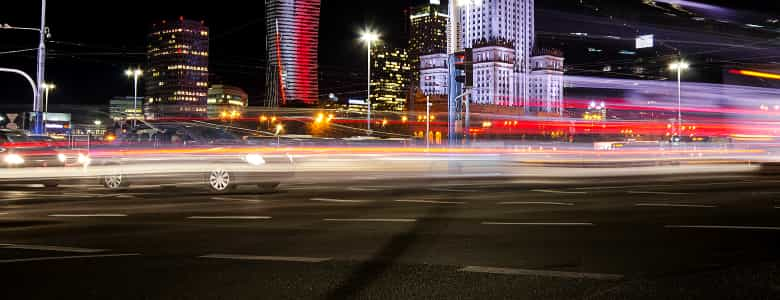Driving the autonomous revolution

When Henry Ford’s mass-manufactured cars — the famous Model T — first rolled out onto American roads in 1908, they set into motion the wheels of a land transport revolution.
More than a century on, the car has remained largely the same in terms of functionality.
Although fuel efficiency may have improved and some vehicles are now powered by electricity, cars are fundamentally still engines on wheels, steered by a human.
But in recent years, a long-overdue upheaval in the automotive industry has started to happen: autonomous vehicles (AVs) look set to be the next quantum leap in urban mobility.
At the TECHX Asia 2017 conference held in early September 2017, Mr Chris Leck, Director of the Futures Division at the Singapore Ministry of Transport (MOT), and Associate Professor Marcelo Ang, who studies robotics and autonomous navigation at the National University of Singapore (NUS), discussed AVs.
They spoke about why and how Singapore is ramping up its efforts to deploy AVs on our roads — and what challenges AVs are being designed to solve.
Urban mobility challenges
The biggest challenge: Singapore’s population is projected to increase to nearly seven million by the year 2030.
Correspondingly, the load on our transportation systems is expected to rise, and because car ownership is still viewed as desirable, traffic congestion is likely to worsen unless the road network is expanded.
Yet, given Singapore’s limited land area, there is little room for this, said Mr Leck.
“Today, our roads take up about 12 percent of our land space; contrast that with the 15 percent that is set aside for housing. Clearly, as the population grows, we can’t afford to grow the road network,” he explained.
At the same time, the silver tsunami of ageing means that manpower constraints will impact all sectors of the economy, including the transport industry.
Without adequate manpower to run our transportation systems in the near future, Singapore’s progress could literally grind to a halt.
“We find that AV technology is the natural solution to these future urban mobility challenges,” said Mr Leck.
“AVs could make public transport so comfortable and convenient that commuters would be willing to give up their cars. Additionally, AVs reduce reliance on human drivers and allow the optimisation of traffic flow to reduce traffic congestion.”
On the right tracks
Under the MOT’s vision, four tracks will leverage AV technology to improve Singapore’s transportation system. The first of these tracks revolves around fixed and scheduled services.
“These are your large-capacity buses that arrive and depart at regular frequencies along fixed routes,” explained Mr Leck.
One example of an automated bus trial being conducted in Singapore is the Navya, added Professor Ang, referring to the self-driving minibus which has a maximum capacity of 15 passengers and plies a 1.5 kilometre route between CleanTech Park and the Nanyang Technological University campus.
Mobility-on-demand services are the second track earmarked for AV deployment. This involves autonomous cars that can be summoned via a mobile app to pick up passengers and ferry them to a desired destination.
NuTonomy, a start-up company that was spun off from Professor Ang’s research group, was the first in the world to conduct a driverless taxi trial in Singapore.
Its fleet has since grown to 15 cars which provide point-to-point transportation.
“In addition to moving people, we also need to move freight around,” said Mr Leck, highlighting that traffic from freight transportation contributes significantly to peak hour congestion.
“This is the third track for the deployment of AVs — autonomous truck platoons that emerge at night to deliver freight. We are collaborating with the Port of Singapore Authority to testbed these trucks.”
Finally, Mr Leck told the audience that AVs will also function as utility vehicles, performing road maintenance and garbage disposal while we sleep.
Think Roombas — the automatic robot vacuum cleaners — but much larger.
The collective use of AVs in these four tracks is expected to simultaneously ease congestion as well as the manpower crunch.
Road for improvement
Despite the recent advances in AV technology, there are still issues in planning, sensing and execution that need to be solved before AVs can be rolled out en masse on public roads, Professor Ang noted.
“The most challenging problem is partial observability, which means the vehicle does not have perfect information about everything that’s happening,” he explained.
“The most difficult thing to predict is the behaviour of people; that’s why it’s challenging to operate in a mixed environment where there are human-driven cars.”
This is where AVs need to be able to learn — errors must be fed back into the computer software so that it can calibrate and refine future predictions.
Smarter algorithms, machine learning and the ability to perform more computationally intensive tasks such as real-time map updating will eventually determine the fate of AVs on Singapore roads.
Nonetheless, by Mr Leck’s assessment, AV technology is improving faster than expected.
“In the next decade or so, we will probably deploy AVs for commuter service in some of our towns, and beyond 2030, we want them on the roads island-wide,” he concluded.
Photo credit:
- Image of Uber prototype self-driving car: Creative Commons ‘Uber autonomous vehicle prototype spotted in San Francisco’ by Dllu licensed under CC BY-SA 4.0.

